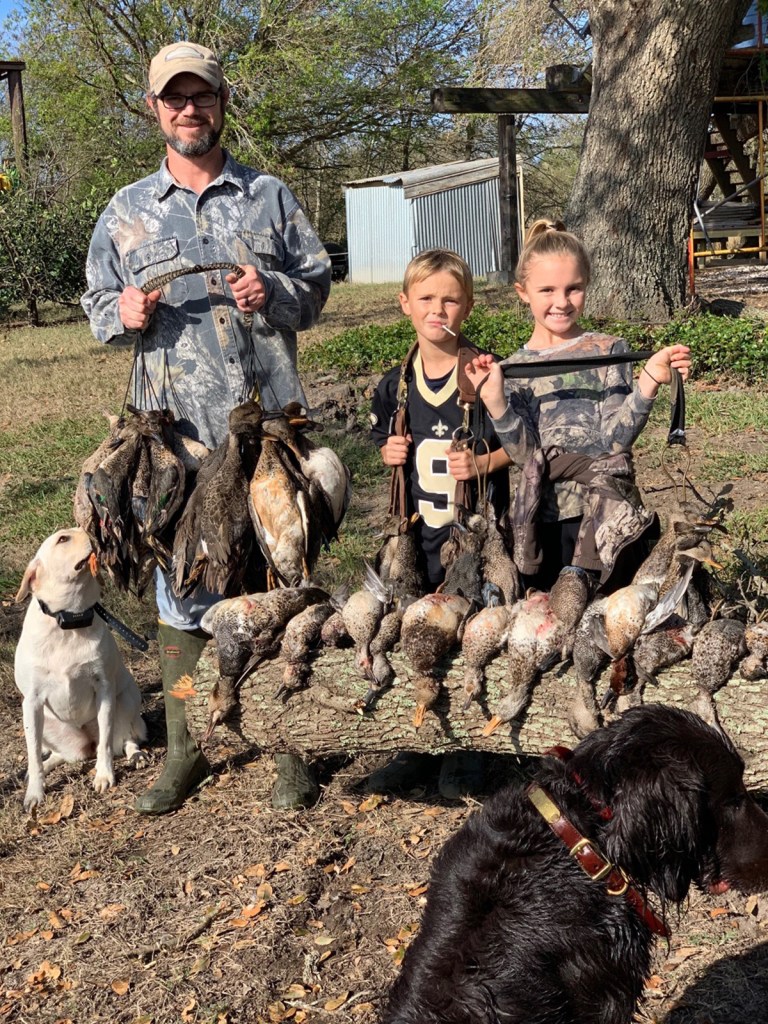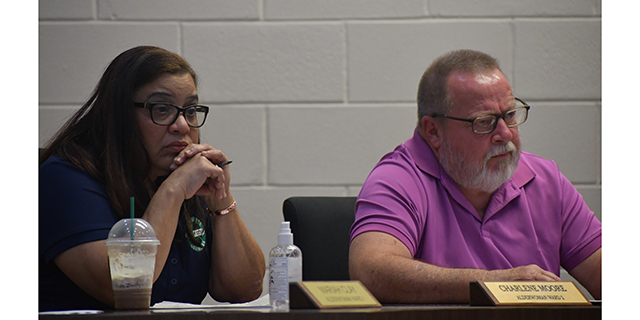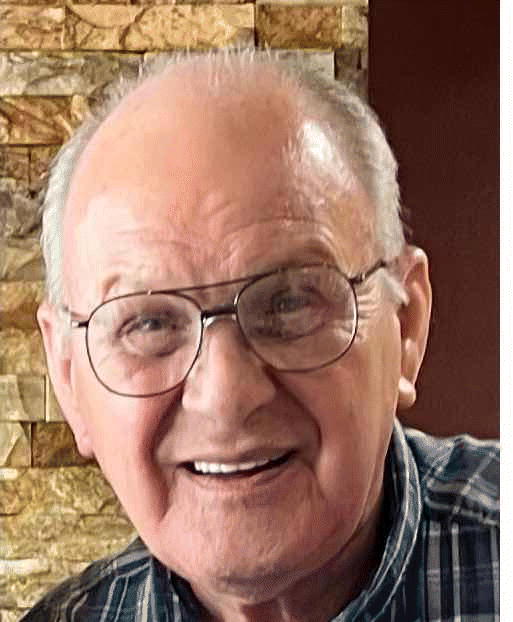Eliases, Delaune, et al, enjoy being in duck blinds most of the first split
Published 6:15 am Sunday, December 6, 2020

- Dr. Marcus Stelly of Lafayette smiles as he stands with a strap full of ducks and his children, Olivia, 10, and Charlie, 7, after a duck hunting trip Nov. 21-22. His son and daughter were in the duck blind with him that morning.
“There are no bad days in a duck blind.”
– Charles F. Waterman
Trending
The Part I Remember, Duck Blinds, 1974
No truer words have been written about duck hunting than that passage in a book of short stories by the accomplished outdoors writer.
You’ll get no argument from Marty Delaune Jr. of New Iberia or any number of outdoorsmen across Louisiana, especially those raised in the heart of Acadiana.
“It’s always fun. Even when it’s slow it’s fun,” Delaune said Tuesday afternoon after he and his duck hunting companions, his long-time friends the Eliases — Dr. Darryl Elias Sr. and his sons Dr. Darryl Elias Jr. and Dr. Eric Elias — hunted many mornings during the first split that opened Nov. 14 and closes today in the Coastal Zone.
“When Eric and I hunted Monday (Nov. 30), we killed three but it was fun. Windy and cold. It seemed like it’d be perfect weather yesterday and they didn’t move,” he said.
The Eliases, Stelly and Delaune hunt in the marsh in Onion Lake near Intracoastal City on approximately 2,000 acres purchased in the early 2010s by the Eliases and Dr. Marcus Stelly of Lafayette, according to Delaune. It is the fourth duck hunting site for the Eliases since the 1970s in that region of Vermilion Parish.
Trending
Multiple days in the duck blind
There was at least one member of their extended circle of duck hunting buddies in one of the seven duck blinds, including the largest that seats seven, almost daily through the first 3 ½ weeks of the first split. The site is a top destination for waterfowlers, sometimes for ducks.
Delaune said, “Somebody hunted almost every day. I think there were only one or two days when nobody hunted.”
Delaune, 63, a forensic investigator for the Forensic Investigations Group LLC following a career with the New Iberia Fire Department, which he retired from 10 years ago as a training and administrative officer, hunted each day of the first three weekends, plus this past Monday. Dr. Darryl Elias Jr. and Dr. Eric Elias took vacations from their respective practices to hunt the first week, then Darryl Jr. hunted the second week and Eric the third week.
Dr. Darryl Elias Sr., the family patriarch and one of several “dean of duck hunters” in the Teche Area, also hunted as much as possible.
“Doc hunts quite a bit. He loves to duck hunt, usually every weekend and one day during the week,” Delaune said.
Delaune and the elder Elias have been close friends for more than 30 years, he said.
“Doc’s two boys, we’re like family. Doc’s boys are like the brothers I never had,” he said, noting he has three sisters.
When they aren’t duck hunting or deer hunting on the property, they are catching catfish on juglines and reeling in redfish to add to the tablefare, Eric, an OB/GYN like his father and brother, said.
Ah, the tablefare. It bonds outdoorsmen who share the same passion for waterfowl hunting.
“It’s about fellowship and cooking,” Eric said.
The 43-year-old all-around outdoorsman, who was born and raised in New Iberia and now lives with his wife, Samantha Salmon Elias, and 8-year-old daughter, Estelle, in Lafayette, has an old recipe that he and duck hunters rave about.
Grandmother’s recipe mouthwatering
Eric cooked it Tuesday evening at the camp after talking about the first split of 2020-21. It’s his favorite meal, he confessed, praising the recipe for baked teal (or wood duck) from his paternal grandmother, the late Stella Elias.
Season the plucked duck with Allspice (Jamaican pepper), salt and pepper, stuff the cavities with apple slices and onions, rub the duck down with olive oil, place in your favorite Dutch oven and bake at 350-375 degrees for two or three hours. It can’t be beat, especially served with a side salad, sweet potatoes and red wine.
Eric, who has an office in Breaux Bridge and practices full-time in St. Martin Parish, enjoyed his baked duck meal after sitting in a deer stand much of the day Tuesday.
“I’ve been trying to kill a buck I’ve seen on camera, but he’s smarter than me,” he said with a chuckle.
The Eliases, Delaune, Stelly, et al, enjoyed red-hot duck hunting the first weekend of the season. There has been a steady stream of duck hunting friends, many of them physicians.
In deference to the coronavirus pandemic, Eric said, “We’ve been kind of keeping the crowds lighter than we usually do.”
The first weekend, Darryl Jr. and his sons, Sawyer and Parker, were in one duck blind while Dr. Marcus Stelly and his children, Olivia and Charlie, were in another and Darryl Sr., Eric, Deluane, Dr. Trevor Peck and Dr. Mike LaSalle waited in another duck blind.
Other duck hunting guests over the past few weeks have included Ben Wormser, Chad Helms and Gordie Broussard.
LaSalle, one of the regular duck hunters on site, has added to his growing reputation as an outdoorsman, Eric said about the doctor who grew up along the Bayou Teche in New Iberia.
“He’s a living legend, in my opinion. A pilot, a big game fisherman, a duck hunter, a commercial shrimper …,” he said.
Eric also noted how much he appreciates Delaune.
Delaune valuable in, out of duck blind
“Marty’s my right-hand man. He probably hunts with me 95 percent of the time. He’s an electrician, a plumber, head guide, a good steward of the earth,” he said.
Delaune, whose first duck hunt was at age 8 with his father, the late Martin Delaune Sr., said he hunts ducks with 3-inch No.3s. The brand doesn’t matter.
“Whatever brand’s the cheapest because they all go ‘boom.’ I don’t go heavy metal shot. I buy whatever’s on sale … if you put it to ’em, they come down,” he said.
Delaune’s Benelli Super Black Eagle 3 Left Hand Shotgun got a workout early in the 2020-21 season, as did so many others. Every duck hunter who shouldered a shotgun had limits the first two Saturdays and Sundays.
“I shot well. I got mine, I’ll put it that way,” Delaune said after bagging six ducks each day of the first two weekends before a significant drop the third weekend. He planned to be out in a duck blind this final weekend of the first split, also.
They killed mostly gray ducks and teal on opening weekend, he said, as well as some mottled ducks and one lonely pintail. After that, teal disappeared for the most part and the bags consisted of mostly grays and wigeon.
“We’ve killed more grays this year than last year. We’ve killed a lot of grays this year,” he said.
As he said earlier, he loves to hunt ducks whether it’s red-hot or ice cold.
“When the limit was three ducks, I still hunted a lot. I went to get my three ducks,” he said.
What does he expect when the second split opens Dec. 19?
“I think if we get freezing weather up north and it freezes Arkansas, it’ll push ducks down,” he said.
The break between splits, he said, “Always helps. Usually, opening day of the second split we do real well. They kind of relax … It doesn’t take them long to remember once we start shooting them again.”
“To the avid waterfowler, no moment of truth can match the instant when a flock first responds to his call and decoys, the time when this wild, free bird of unsurpassed grace begins a descent from the sky down to gun range. It is a stirring spectacle …”
– Grits Gresham, The Complete Wildfowler, 1973
“A symbiotic relationship exists between waterfowl and waterfowler. The birds provide sport, relaxation and that undefinable something that comes over anyone who’s ever watched a flight of canvasbacks against a gray sky. The hunter, in turn, provides for the well-being and very existence of the birds.”
– John G. MacKenty, Duck Hunting, 1953





